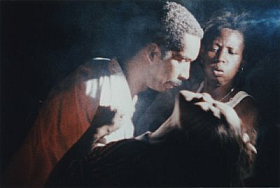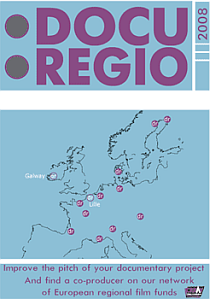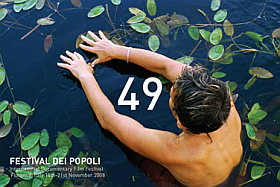Mikael Opstrup har skrevet en udvidelse af den dokumentarfilmens poetik, som vi tidligere bragt på FILMKOMMENTAREN.DK. Her følger teksten:
DEN DOKUMENTARISKE FORTÆLLING – Skabelsen af dokumentarfilmen, sammenholdt med dokumentarprogrammet og fiktionsfilmen / THE DOCUMENTARY NARRATIVE (English version after the Danish)
1. Fiktionsfilmen er defineret af historien. Et handlingsforløb som nedfældes i manuskriptet og siden omsættes til film. Instruktørens arbejdsproces er lineær og fiktionsfilmen er dramaturgisk friktionsfri. Der er kun et handlingsforløb. Fiktionsinstruktørens bestræbelse er fortælling.
2. Dokumentarprogrammet er defineret af emnet. En begivenhedsrække, som journalisten gengiver så objektivt som muligt. Selv om objektivitet er en umulighed og skabelsen af programmet dermed modsætningsfyldt, er journalistens bestræbelse entydig og vejen mod det uopnåelige er lineær, som i fiktionsfilmen. Der er kun et handlingsforløb. Journalistens bestræbelse er gengivelse.
3. Dokumentarfilmen er defineret af både et begivenhedsforløb og en fortælling. Begivenhedsforløbet finder sted i den virkelighed dokumentarfilmen beskriver. Fortællingen er instruktørens genfortælling af begivenhedsforløbet. Der er to handlingsforløb og kernen i dokumentarfilmens dramaturgi er modsætningen mellem de to handlingsforløb, det faktuelle og det narrative. Dokumentarinstruktørens bestræbelse er genfortælling.
4. Både fiktionsfilmen og dokumentarprogrammet består ideelt set af to skarpt opdelte forløb: i fiktionsfilmen at skrive et manuskript og derpå omsætte dette til film; i dokumentarprogrammet at indsamle fakta og derpå at ordne disse begivenheder i et program; dokumentarfilmens forløb består ideelt set af en uendelig vekselvirkning mellem at skabe fortællingen, optage begivenhedsforløbet og ændre fortællingen.
5. Således har dokumentarfilmen noget til fælles med både dokumentarprogrammet og fiktionsfilmen. De to dokumentargenrer har den antagonistiske modsætning mellem virkelighed og formidling til fælles; men hvor journalistens bestræbelse vil være at minimere modsætningen, vil dokumentarinstruktørens være at uddybe den.De to filmgenrer har fortællingen til fælles, da der ingen dramaturgisk forskel er på fiktionsfilmen og dokumentarfilmen; men hvor fiktionsinstruktøren selv skaber fortællingens enkeltelementer – scenerne – må dokumentarinstruktøren beslutte, om den ene eller den anden begivenhed er bærer af enkeltscenen i den dokumentariske fortælling.
6. Dokumentarfilmens modsætning mellem det faktuelle og det narrative er antagonistisk i arbejdsmæssig henseende men komplementær i kunstnerisk forstand. Antagonisme er det forhold, at to ting er uforenelige modsætninger. At to modsætninger udelukker hinanden. Komplementaritet er det forhold, at to sider af en sag foruden at udelukke hinanden også kompletterer hinanden. At to modsætninger er hinandens forudsætninger.
7. Skabelsen af en dokumentarfilm er en antagonistisk proces. For instruktøren personligt fordi fortolkningen af virkeligheden kun bliver interessant, hvis den er resultat af en stræben mod objektivitet – velvidende at det er i fortolkningens møde med gengivelsen at dokumentarfilmen bliver til kunst. Og arbejdsmæssigt fordi vi skal formulere en fortælling på et tidspunkt, hvor vi endnu ikke kender det begivenhedsforløb, fortællingen gengiver. Det kan ikke lade sig gøre. Men det lader sig gøre. Det sker ved at transformere den antagonistiske modsætning til en komplementær.
8. Det betyder, at man hele tiden skal ændre fortællingen efter udviklingen i virkelighedsforløbet. Det vanskelige ligger i at hengive sig til den absolutte stræben, som er forudsætningen for en vellykket og forløst fortælling, velvidende at virkeligheden hele tiden vil ændre fortællingen. Konstant at stræbe mod at strukturere en virkelighedsfremstilling, som må korrigeres af virkeligheden. At kombinere absolut åbenhed med absolut beslutsomhed. At stræbe fuldt og helt mod det uopnåelige. Ja netop at finde styrken til at stræbe, fordi målet for denne stræben, er uopnåeligt.
9. Dette forhold er kernen i arbejdet med den dokumentariske fortælling. At erkende nødvendigheden af at transformere den antagonistiske modsætning mellem virkelighed og fortælling til en kreativ komplementær modsætning, er en bevidsthedsmæssig forudsætning for at skabe dokumentarisk filmkunst. At skabe det fuldendte ved at stræbe mod det umulige.
10. Dokumentarfilmen forløses kunstnerisk, når kun det ene lag – virkeligheden – er synligt som kontinuerlig fortælling. Når genfortællingen ikke fungerer harmonisk, dvs. hvis enkeltelementerne fra virkelighedsforløbet ikke er fuldstændigt sammenfaldende med scenerne i fortællingen, åbenbares dette andet lag – fortællingen – som et postulat. Derved ændres det virkelige begivenhedsforløb fra at udgøre fortællingens elementer til at blive en ny og selvstændig fortælling. Filmen får dermed to uafhængige narrative forløb, hvorved værket falder fra hinanden. Men når instruktørens fortælling går op i en højere enhed med virkeligheden, ophører den med at være til stede i tid og rum og findes blot som dramaturgisk klarhed.
11. Evnen til at arbejde kreativt forløsende med uforenelige modsætninger er en central evne hos dokumentarfilm instruktøren.
THE DOCUMENTARY NARRATIVE
The creation of the documentary – compared to the documentary programme and the fiction film.
Mikael Opstrup
1. Fiction is defined by the story. A course of events that is written down in the script and then converted into a film. The directors work process is linear and the fiction film is from a dramaturgic point of view frictionless. Only one course of events exists. The fiction director’s endeavour is storytelling.
2. The documentary programme is defined by the subject. A course of events that the journalist reproduces as objectively as possible. All though objectivity is an impossibility and the creation of the programme thereby antagonistic, the journalist’s effort is unambiguous and the road towards the unattainable is linear as in fiction. Only one course of events exists. The journalist’s endeavour is reproduction.
3. The documentary film is defined by both a course of events and storytelling. The course of events takes place in the reality the documentary describes. The story is the director’s retelling of the event. There are two courses of events and the core of the documentary’s dramaturgy is the contradiction between the two courses of events, the factual and the narrative. The documentary director’s endeavour is retelling.
4. Both the fiction film and the documentary programme exist ideally of two clear-cut developments: In fiction to write a script and there after to transform it into film; in the documentary programme to collect facts and there after to put the events in order in a programme. The documentary film exists ideally of en endless interaction between the creation of the story, recording of the events and changing the story.
5. Hence the documentary has things in common with both the documentary programme and the fiction film. The two documentary genres have the antagonistic contradiction between reality and presentation in common; but where as the journalist’s endeavour is to minimize the contradiction the documentary director’s endeavour is to maximize it. The two film genres has the storytelling in common; but where as the fiction director creates the story’s components – the scenes – himself, the documentary director has to decide if the one or the other event is the bearer of a scene in the documentary story.
6. The documentary film’s contradiction between the factual and the narrative is antagonistic in work-related respect but complementary in artistic respect. Antagonism is the condition that two sides of an issue are inconsistent. That two contradictions exclude each other. Complementarity is the condition that two sides of an issue besides excluding one another at the same time complement one another. That two contradictions presuppose one another.
7. The creation of a documentary is an antagonistic process. On two levels. Personally for the director because the interpretation of reality only becomes interesting if it is the result of a strive for objectivity – well aware that it is in the interpretation’s encounter with the reproduction the documentary film becomes art. Work related because we have to put forward a story at a time where we do not know the course of events, the story reproduces. This is not possible. But it is done. Done by transforming the antagonistic contradiction into a complementary paradox.
8. This means to constantly modify the narrative one has created because the perception of reality constantly changes the story. The difficulty being the devotedness towards absolute aspiration, which is the essential prerequisite for a successful and released story, well aware that reality constantly will change the story. Constantly striving to organise a presentation of reality that must be corrected by reality. Combining absolute openness with absolute resolve. Striving body and soul to achieve the unattainable. Actually finding the strength to strive because the very goal one is striving to attain is unattainable.
9. This condition is the essence of working with the documentary story. To realise the necessity of transforming the antagonistic contradiction between reality and storytelling into a creative complementary paradox is a conscious prerequisite for the creation of documentary film art. The creation of the complete by striving towards the unattainable.
10. The documentary film is released artistically, when only one layer – reality – is visible as a continual narrative. When the retelling is not harmonious, i.e. if the single elements from the course of events are not completely convergent with the single scenes in the story, this second layer – the narrative – is revealed as a postulate. Thus the actual sequence of events is reversed from representing the elements of the narrative to becoming a new and autonomous narrative. Thus the film gets two independent courses, by which the work falls apart. But when the director’s work comes together with reality it ceases its presence in time and space and exists only as dramatic clarity.
11. The ability to work creatively releasing with inconsistent contradictions is a key ability of the documentary film director.
Mikael Opstrup is producer, Final Cut Productions. opstrup@final-cut.dk http://www.final-cut.dk/ Mail private: mikael@opstrup-husum.dk











